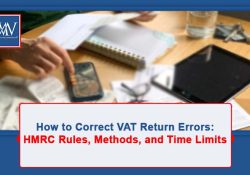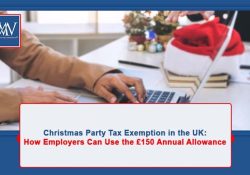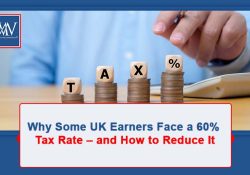Employer supported childcare
Childcare and employer provided childcare vouchers are very popular with both employers and employees alike. If your business is in the Harrow area or you are employed in the area we, at Makesworth Accountants, can advise you on the exemptions available for employer supported childcare.
Employer supported childcare, commonly by way of childcare voucher, is for many employers and employees a tax and national insurance efficient perk. We consider the implications of this type of benefit on the employer and employee.
Background
The workplace nurseries exemption was introduced many years ago. This exempts from tax and NIC the provision to an employee of a place in a nursery at the workplace or in a facility wholly or partly financed and managed by the employer.
Whilst these sorts of arrangements are not that common, the later introduction of a limited tax and NIC exemption for employer-contracted childcare and employer-provided childcare vouchers has been very popular with both employers and employees alike.
Salary sacrifice
Many employers use these childcare exemptions as part of salary sacrifice arrangements; for example, the employee gives up pay, which is taxable and NIC-able, in return for childcare vouchers, which are not. This may save tax and NIC for the employee and NIC for the employer. Such arrangements can be attractive; however care needs to be taken when implementing a scheme to ensure that it is set up correctly. Also, for those on low rates of pay, such arrangements may not be appropriate.
How much childcare can be provided tax and NIC free?
This depends on when the employee joined the employer’s scheme. For those who joined the employer’s scheme prior to 6 April 2011 the limit is currently £55 a week.
If the employer-contracted care exceeds £55 per week the excess will be a benefit in kind and subject to Class 1A NIC. However, with vouchers, although any excess is also a benefit in kind it is subject to Class 1 NIC via the payroll. As the tax and NIC issues are complex many employers limit their employees’ potential entitlement to a maximum of the exempt limit (currently £55 a week).
The exempt limit applies to the full face value, rather than the cost, of providing a childcare voucher, which would normally include an administration fee.
An employee is only entitled to one exempt amount even if care is provided for more than one child but it does not matter that another person may also be entitled to an exempt amount in respect of the same child. As always, there are various conditions to meet but these rules have led to many employers providing such care, particularly childcare vouchers, to their employees.
What about those who join a scheme from 6 April 2011 onwards?
The limit on the amount of exempt income associated with childcare vouchers and employer-contracted childcare for employees joining an employer’s scheme will be restricted in cases where an employee’s earnings and taxable benefits are liable to tax at the higher or additional rate.
Anyone already in a scheme before 6 April 2011 is not affected by these changes as long as they remain within the same scheme.
What do employers have to do?
To identify the rate of tax an individual employee pays in any one tax year, an employer needs to carry out a ‘basic earnings assessment’ for any employee who joins an employer-provided childcare scheme on or after 6 April 2011.
Employers who offer or provide employer childcare are required, at the beginning of the relevant tax year, to estimate the ’employment income amount’ that the employee is likely to receive during that year.
This is basically the contractual salary and benefits package (not discretionary bonuses or overtime) less the personal allowance if appropriate.
Employers must keep a record of the basic earnings assessment. These records do not need to be sent to HMRC but must be available for inspection by HMRC if required.
The employer must re-estimate the ’employment income amount’ for each tax year.
What is the position for the employee?
For 2018/19, the personal allowance for most employees is £11,850 and the basic rate limit will be £34,500, a combined figure of £46,350. The higher rate limit is £150,000.
If the level of estimated earnings and taxable benefits is equal to or below the equivalent of the sum of personal allowances and the basic rate limit for the year, the employee will be entitled to relief on £55 exempt income for each qualifying week.
If the level of estimated earnings and taxable benefits exceed the equivalent of the sum of personal allowances and the basic rate limit for the year as above) but falls below the limit at which tax becomes payable at the 45% rate limit for the year, the employee is entitled to relief on £28 exempt income for each qualifying week.
If the level of estimated earnings and taxable benefits exceed the equivalent of the additional tax rate limit for the year, the employee is entitled to relief on £25 exempt income for each qualifying week.
Similar rules apply for NIC purposes.
As the employer has to estimate the employee’s tax position each year, the amount of exempt income they can receive may change throughout their period of employment.
New starters
The rules are modified where employees join the scheme part way through a tax year. In that case, the earnings review has to be carried out at the point of joining. Basically, the joining employee’s salary and taxable benefits need to be pro-rated upwards to estimate the notional annual earnings figure for the employee.
Gaps in payment
An employee can ask to stop receiving childcare vouchers temporarily whilst staying in the employer’s scheme; for example, if an employee only works during school term time and doesn’t need the vouchers during the school holidays. Basically, as long as the gap in providing the vouchers doesn’t exceed 12 months the employee can still be classed as an existing member of the employer’s scheme.
This also applies to employees who are on maternity leave, sick leave and those who wish to take a career break, provided that the total length of absence does not exceed 12 months.
Further information
HMRC have provided many questions and answers on their website to help both employees and employers and these can be viewed here.
Tax-Free Childcare scheme
The government has introduced Tax-Free Childcare (TFC), a new tax incentive for childcare.
The relief is 20% of the costs of childcare up to a total of childcare costs of £10,000 per child per year. The scheme will therefore be worth a maximum of £2,000 per child (£4,000 for a disabled child). All children under 12 (up to 17 for children with disabilities) are eligible.
To qualify for Tax-Free Childcare all parents in the household must generally meet a minimum income level, based on working 16 hours a week (on average £120 a week) and each earn less than £100,000 a year and not already be receiving support through Tax Credits or Universal Credit.
How does this relate to employer supported childcare?
The existing scheme, ESC, will remain open to new entrants until at least September 2018 to support the transition between the schemes. ESC continues to be available for current members if they wish to remain in it or they can switch to the new scheme but parents cannot be in both ESC and TFC at the same time.
How we can help
If your business is located in the Harrow area and you would like to discuss Employer supported childcare in further detail, please do not hesitate to contact us at Makesworth Accountants.
Need Accountancy Support?
For information on bespoke training, or if you have any other questions for Makesworth Accountants, please fill in your details below


















 151
151